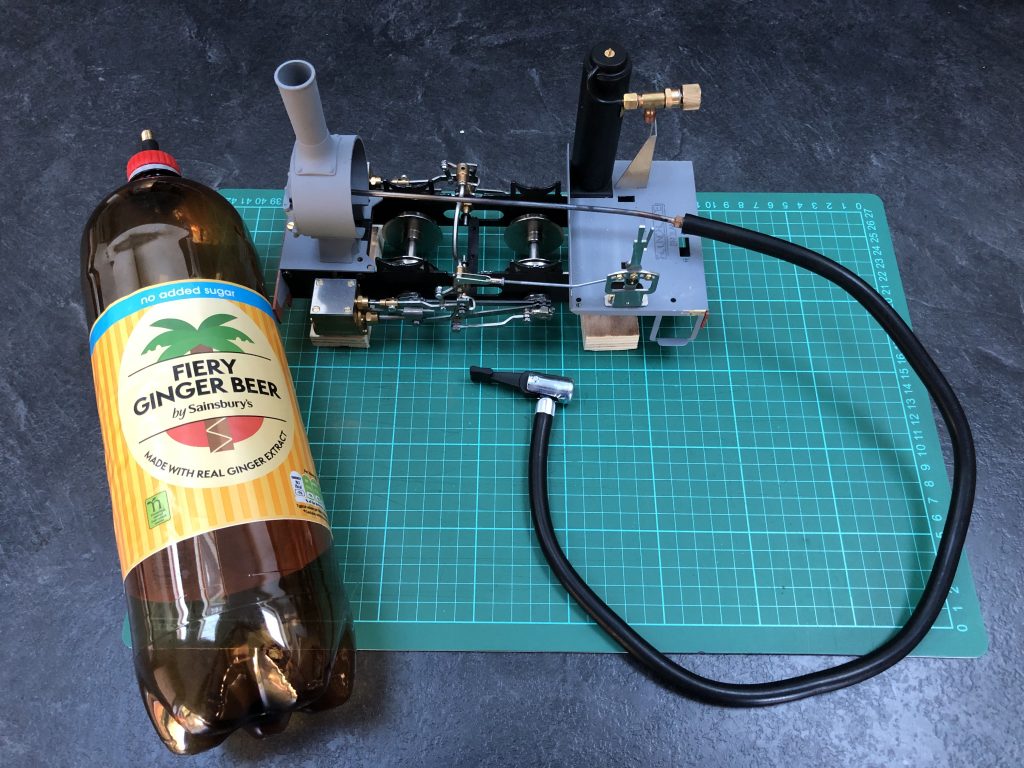I am building a steam locomotive from a kit. Last week, I tried steaming up for the first time, and it was a very exciting success. The instructions discuss correcting the timing, and then running in. To do the timing, it is suggested that one runs the loco on compressed air instead of steam, because steam makes everything hot, and fingers can’t adjust things very well if they are hot.
Everyone I’ve asked about running on air has bought a compressor. They recommend all sorts: quiet ones, small ones, large ones, compressors for air brushes or for commercial use. I don’t want to buy one, because I will use it rarely, and I don’t have anywhere to store it.
A friend of mine does a lot of his own motorcycle maintenance. He has added pressure gauges inside his tyres and somehow wired that up to a custom dashboard (link to his Facebook page). To test the pressure gauges, he used a fizzy drinks bottle. And that got me thinking.
The working pressure of the steam loco is about 40 to 60 psi (lbs per square inch). A fizzy drinks bottle can apparently withstand about 170 psi. I drilled a hole in the cap to take a Schrader tyre valve (same as on a bicycle or a car). I bought a spare foot-pump hose from Halfords for about £5, which fits snugly on the end of the superheater pipe. A foot-pump is used to pressurise the bottle.
It only runs for a few seconds, but that should be enough to check if the pistons and valve gear are getting stuck anywhere, and hence to try out the tuning. For a proper test, it needs to be run on steam again.
Here is a photo of the whole setup.

